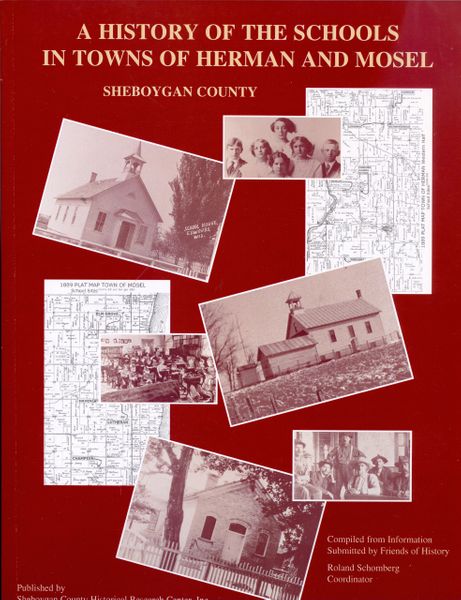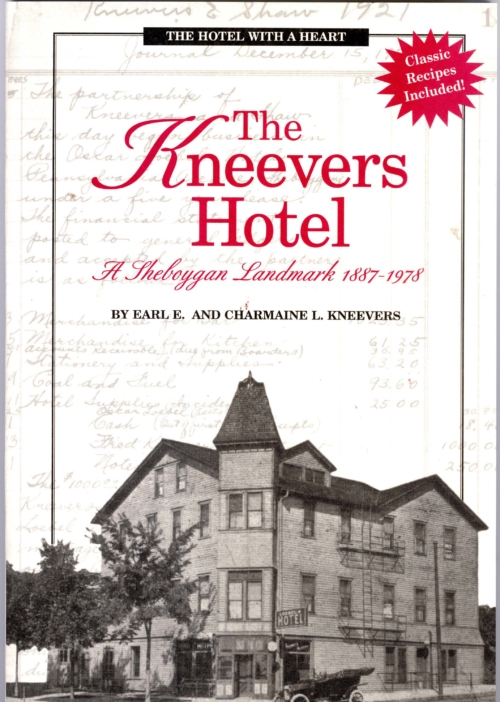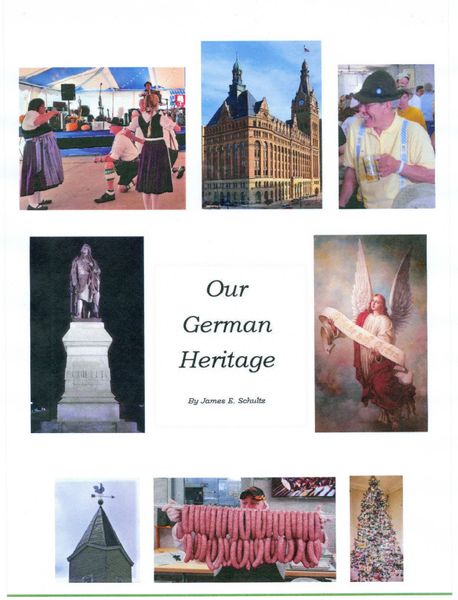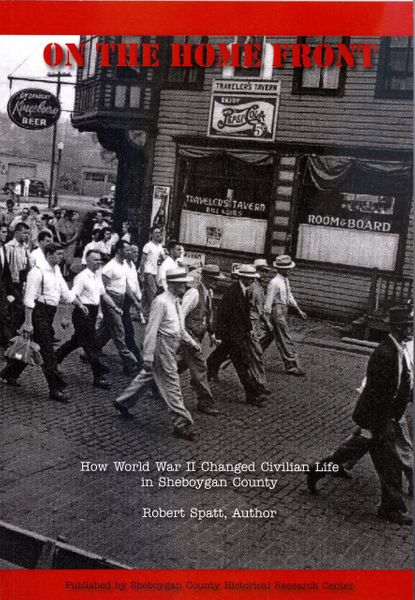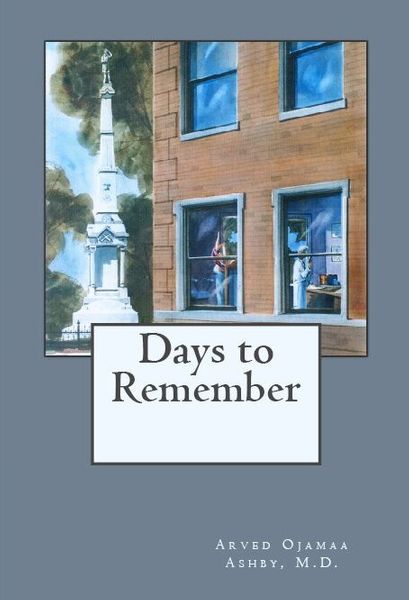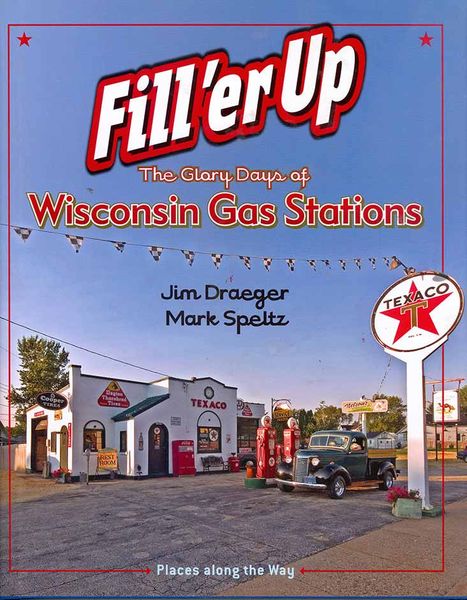-
Mention the name Prange’s and no matter your age from 40 to 90 you probably have personal memories of the legendary Sheboygan department store. Whether those memories are of the annual animated Christmas window displays and caramel corn, the use of due bills, charge-a-plates, layaways, will-call, the x-ray machine in the shoe department or the escalators, they are shared by many and are part of the cherished collective history of the H.C. Prange Company. This publication is by no means a comprehensive history of the H.C. Prange Company. It is more a trip down memory lane, filled with images, stories and recipes submitted by former employees and loyal shoppers.
-
This collection of stories, images, ads, news articles and factoids is designed to give you an introductory look at the local history of the 1920s and 1930s in Sheboygan County. It deals with vice- Prohibition, prostitution, gambling, raids on stills and crime over two decades. It is by no means comprehensive and much of what has been collected is story. This is meant to be fun and informative -- a great conversation starter.
-
Rebuilding a Railroad in the 21st Century: Sheboygan County, Wisconsin, documents the rebuilding of an 11-mile rail line in Sheboygan County, after being dormant for nearly 30 years. This was more than just a fix-it-up job, but the replacement of the entire line from the ground up with new track built to modern standards to handle heavy loads. It also required one trestle to be completely replaced and others reinforced. Adding to the generous amount of photos, there are “before” and “after” photos taken at dozens of locations, and it won’t seem possible that these photos were taken at the same location. Also included is the history of this line from the pre-civil war era to current times. Old rail dating back over 150 years was found and included is the story that these old rails tell.
-
Since 1953, August brings Bratwurst Day, a celebration of sausage and of our collective German heritage. The brat is a social food in Wisconsin where Germans first introduced it to the New World. We have brat fries on weekends like folks have BBQs in the south and Chicago has its deep dish pizza. It is part of a deep food tradition. Few things identify one’s German heritage more than making sausage. Sausage was a means of survival for our German ancestors during the winter months, as well as a way to use precious meat scraps and pay homage to their porcine good luck charm. This book documents the long and varied history of some of Sheboygan's nearly forty meat markets and sausage producers. We’ll revisit sausage-making in the county and remember the heyday of 1950s Bratwurst Days.
-
An entertaining compilation of great newspaper articles following the history of the railroad in Sheboygan County. Some are humorous, some are serious, and some are downright shocking. Great reading for the railroad enthusiast and amateur alike. 2016 Reprint.
-
By Robert Spatt. The City of Sheboygan has many interesting and important "Firsts". This book documents many of those items. There is bound to be a chapter for every interest and although residents of Sheboygan will know many of these firsts, there are a lot of surprises. Some of the firsts are obscure such as the first bratwurst stand, the first department store, the first female principal of a school, the first baby born in Sheboygan; Others, such as the city founder, Farnsworth, and many of the sporting events, maybe remembered by many. The final chapter is entitled “Et Cetera.” Here are little known firsts that don’t fit into any category – Peter Dinkel and his canaries, Clemens Reiss the first to cross the city’s new Eighth Street Bridge in 1923, the street sprinkler who sprayed water on the dusty dirt streets and other obscure first facts. A book to pick up and read a chapter at a time then casually sprinkle conversations with a “did you know that….”
-
By Gustave Buchen
Considered the quintessential book on Sheboygan County history, this volume by Gustave Buchen, was written in 1944, when many of the original settlers were still alive. The information is well documented and tells the story of Sheboygan County's first years. The book includes an index, maps of early Sheboygan County and drawings. 2015 Reprint.
-
The cheese industry has been very important to Sheboygan County, Wisconsin since the 1870s. This is a history of the industry in the county. It is divided by townships and lists some 210 different factories that existed over time. It deals with cheese making in the home, the development of cheese factories, factories and their locations, cheese makers, the cheese making season, tools and equipment, the growth of the industry, cheese exchanges, types of cheese and much more
-
By Peter Laun
Elkhart Lake, Wisconsin, home to Road America today, was once a summer vacation retreat to thousands of city dwellers from Chicago, Milwaukee and St. Louis. The trains and interurban brought them to enjoy the cool breezes and waters of Elkhart Lake, Crystal Lake and Little Elkhart Lake. This volume discusses Joseph Moore, the founder and many other colorful characters of the village. It reminds us of Villa Gottfried, the Schwartz Hotel, Siebken's, Pine Point, Osthoff and Camp Brosius. Photos accompany each story.
-
The story of the Milwaukee Northern . . . Sheboygan's interurban link to the rest of the world by Peter Fetterer. Available by about November 30, 2018.
-
Across time, cemeteries have acted as places of burial and remembrance, but they also provide vivid records of community history. Whether large or small, well maintained or neglected, historic cemeteries are an important part of our cultural landscape. The vast richness of expression through form, decoration and materials inform our understanding of the individuals buried in historic cemeteries and their cultural significance. The very stones that mark the graves form a museum of their own.
A church’s stained glass windows, to some degree, play much the same role to a community. They tell the story of some element important to the life of parishioners. They uplift, beautify and instruct.
This volume will introduce readers to some of the most interesting and beautiful stained glass windows and cemetery monuments in the county. We’ll discuss the background and history of each form of expression and much more. Consider this a primer to Sheboygan County’s treasures.
-
Sale!
By Roland Schomberg
Originally published 1994, this 2008 update provides the reader with a look at the schools in the towns of Herman and Mosel from the town’s earliest history. Schools covered: Millersville, Howards Grove, Green Bay Road, Washington, Franklin, Pinehurst, Schwartzwald, Elm Grove, Haven, Champion, and Lakeview.
-
By Elmer Koppelmann The village of Howards Grove began as two separate villages, Howards Grove and Millersville. Not until 1967 did the two unite into one incorporated village. The first European settlers to settle in the town of Herman (originally named Howard) were the "Lippers"- a group of 13 families and seven orphaned young people from Lippe-Detmold, Germany. The year was 1846, and the group's leader was Friedrich Reineking. They settled on the land that is now Lakeland College. This volume brings the history of the area back to life, and documents the families and businesses that, today, make up Howards Grove.
-
By Mary Risseeuw
These letters, memoirs and travel journals span a hundred year period (1847-1959) and offer a fascinating view into the lives of the immigrants and their families. Some provide remarkable detail about their journey to America and their struggles to establish a new life. Others offer little beyond the basics: weather, health, crops, births and deaths. Most are grateful for the blessings of God and the fact that they are still ‘fresh and healthy’ (alive and well, in more modern terms!). The criterion for selecting the contents of this book was to present an overview of different settlements in Wisconsin and to provide a glimpse into the differences and similarities between the various immigration waves. There are vivid tales of crossing the Atlantic Ocean and personal glimpses into the Civil War, World War I and World War
-
Sale!
By Bill Wangemann.
This is a collection of Sheboygan City Historian, Bill Wangemann’s 2005 and 2006 Sheboygan Press articles. Topics include Memories of Railroads, Electric Rail or the Interurbans, maritime stories- The Burning of the Niagara and The Mysterious Loss of the Pere Marquette 18, movies, TV and drive-in theater, Garton Toy and its fire, the stumpff fiddle and so much more.
-
By Bernard Michaels
The poignant story of immigration and settlement of the Irish in Sheboygan County, this book gives an account of the Byron-Lima Settlement, a span of some thirty miles in which over 600 Irish families settled. The community's irregular borders ran from Kennedy's Corners in Lima to the frame church of Byron's St. John. The town of Mitchell, Sheboygan County is at the heart of this story.
-
Sheboygan, Wisconsin, known for years as "Chair City" has been home to such companies as Phoenix Chair, Northern Furniture Company, Mattoon, Crocker Chair, Bemis-Riddell, Thonet, R-Way and more. This book traces the history of furniture making in Sheboygan County from the mid-1800s to present day companies.
-
The Sheboygan County Connection is a collection of forty-one stories about the way folks from Sheboygan County are connected to the greater world. Most were seen as Sheboygan County History columns in the Sheboygan Press from February to October 2014. Extra information and photos have been added. Topics range from ice fishing and the brutal winter of 1936 to the advent of Rocky Knoll and citizens’ participation in the Manhattan Project.
-
By Mary E. Meyer
This book is a concise history of the port of Sheboygan, complete with photos of the harbor and the ships that plied its waters. Histories of harbor industries included.
-
Sale!
By Marie Prisland
This is a reprinting of 23 February 1945 Sheboygan Press article by Ms. Marie Prisland. Marie Prisland was born Marie Cerne in Recica, Slovenia, Austria and came to the United States in 1906 when she was 15 years old. On February 24, 1908 she married John Prisland in Sheboygan, Wisconsin. In 1945 she wrote her history of the Slovenians in Sheboygan which was published in the Sheboygan Press and Wisconsin Magazine of History published by the State Historical Society of Wisconsin. She researched Slovenian history and migration for over forty years.
-
A Time for Reflection 1892-1992 This booklet was prepared for a centennial celebration of the arrival of the first Volga Germans in Sheboygan, Wisconsin. That small group of seven, unsure of their destination or what they would do when they arrived, was followed by many other relatives and friends. Today, thousands of people who live in Sheboygan - or who lived there at one time - are descendants of German Russian immigrants. “A Time for Reflection” is our anniversary theme, for now is an appropriate time to reflect on our ancestors’ lives and to count the many blessings we have received as a result of their courage and sacrifice. With a new government in power, many Russian people of German descent will be searching for relatives and acquaintances in the West. Many Americans, too, want to be reunited with lost kin. We want to be ready to help each other. The history, chronology, and maps in this booklet represent only a small part of our unique heritage. Here is a brief look at the Volga Deitsch, how they got to Russia and why they came to America, and then to Sheboygan. It is a tale of more than 200 years of travel, hardship and joy endured by our ancestors. Older generations might recall the good times as well as the not-so-good when they read about old customs and practices. Younger people may learn a history they did not know existed. This 2016 update adds extra photos and more history.
-
Days Gone By The Falls - Growing up in small town Wisconsin is John Wirth's poignant, colorful account of growing up in Sheboygan Falls in the 1950s and 1960s. The book features a collection of 39 newspaper columns, which have appeared on a regular basis in The Sheboygan Falls News since 2007. The book takes readers back to a time when imagination, creativity and the pursuit of good, clean fun ruled the lives of youngsters long before the clutches of modern technology swooped in to stifle such endeavors. Wirth paints a vivid portrait of an era in time when people worked hard without question and played hard without considering the possible dangers of youthful exuberance. Readers will meet several colorful characters who inhabited many memorable locales in the quant, picturesque, Midwestern city of Sheboygan Falls. Whether you have your own memories of the 1950s and 1960s or are looking to find out what all the fuss was about, buckle in and enjoy the twists and turns of a real-life, small-town adventure ride going on 60 years in the making.
-
Sheboygan County Connection III is the continuing record of the lives of Sheboygan County residents and their adventures in history. Read about dozens of historic happenings experienced by residents from the death and autopsy of victims of Ed Gein to the mysteries of Sheboygan's Rancho de las Flores, refugees of the Great Chicago Fire of 1871, the architect for the construction of the first Mormon Temple at Nauvoo, Illinois and history of outhouses. These stories ran in the Sheboygan Press from November 2015 to October 2016.
-
by Peter Fetterer
The railroads of Sheboygan County have left behind a legacy of stories … some tragic, some humorous, and some almost unbelievable. The stories bear testimony to the men and women who worked on the early rail lines that served the county … the engineers, firemen, brakemen and conductors who ran the trains … the shop men and track gangs who kept them running … the station agents, freight handlers and railroad officials supporting the operations, and the passengers and hobos who rode the rails.
The railroaders working these lines for nearly 150 years and the passengers riding their trains have been an integral part of our history. These are some of their stories … tales from the rails of Sheboygan County.
-
By James E. Schultz. More than a history about Schultz's great grandparents, this book features:
- threads of our German heritage, including food, wine and beer, language, religion, music, dance, and customs woven into the family history and indexed;
- sections devoted to “Why they came”, “Today’s German Attitudes”, and “People and Places”;
- a “Special Find” for each of the eight featured ancestors, a genealogical gem that I uncovered;
- a wide variety of church, government, military, personal, and other resources, with a list of 40 resources cataloged as an appendix; and,
- a section called “Challenges, Tips, and Surprises” that provides helpful pointers for finding information.
-
Sale!
By Bill Wangemann
This second book of Bill’s is a compilation of articles that appeared in the Sheboygan Press during 2004. Many are based on activities of the 1950s
-
Sale!This book covers Oostburg school history from 1899-2005. A great timeline gives the reader a wonderful overview of what happened educationally and socially in Oostburg, Wisconsin. Class photos and memories and reflections are included.
-
Sale!
By Pieter J. Risseeuw
A historical novel, originally published as a trilogy, of Dutch immigration of the mid-nineteenth century. This English translation is made available for the first time by permission of the original publisher and supported by Netherland-America Foundation of New York. Originally published in Dutch in 1947, the novel discusses the trials and tribulations of immigration and the establishment of the Dutch churches and colonies in Iowa and Michigan.
-
By Millersville Historical Research Group
The history of the area dates back to 1846 when the first immigrants found their way along the Pigeon River and settled in the area. At first the two settlements were known as Howards and Mueller Villa, later becoming Howards Grove and Millersville.
But in 1967, the two communities incorporated as Howards Grove-Millersville, becoming Sheboygan County’s 10th village, the fourth largest. It also brought the village fame with its cumbersome 24-letter title, the longest in the state. Eventually, the city dropped Millersville and took Howards Grove as its proper name. This book follows the history of just the Millersville portion of the area.
-
By Robert Spatt On the Home Front is a chronological account of daily life for Sheboygan residents and how it changed dramatically during WWII. The story is told by way of actual headlines, story excerpts, photographs, editorials and advertisements as published in Sheboygan County newspapers at that time.
-
By Plymouth Historical Society and SCHRC
Plymouth, originally considered a “hub” city because of the hub and wheel factory located there, it has also earned that moniker because of its central location between Milwaukee and Green Bay. Tourists flock to Plymouth year round to visit the variety of shops, to golf, swim and ski, or explore the beautiful Kettle Moraine State Forest. Residents are proud of their heritage, which can be seen at sites throughout the city. Visit Plymouth through this wonderful tribute using historic photographs.
-
By Howards Grove Historical Research Group, Doris Henschel.
Ada was one of four small trading places (Howard, Franklin, Edwards and Ada) in the township in 1912. Ada consisted of a hotel, cheese factory, store and blacksmith. The population of town Herman in 1910 was 1,913, the majority of whom were Germans. This hamlet, located on the old Calumet-Sheboygan Plank Road twelve miles northwest of Sheboygan has a name of unknown origin. The post office was established on January 13, 1868, with Anton Goepfert acting as the first postmaster. Operations were discontinued on November 18, 1873. It was re-established on August 31, 1877, and once again discontinued permanently on April 30, 1909. William Maurer was the last postmaster. The book is full of history and wonderful memories.
-
By Edgar Harvey Jr.
This book deals with many of Ed Harvey’s predecessors as Sheboygan County Surveyors. Harvey, after years of research, found that they included men of great character, and others whom we could term “shysters”. They included some pretty unremarkable individuals and others of great genius. Although they were humble surveyors while they worked in Sheboygan County, some of these men invented great things, or were otherwise involved in major events which changed the history of the entire nation or the world. One man worked on the Brooklyn Bridge project. Another worked on the Panama Canal. At least two of these men prepared maps which shaped the boundaries of nations. With all the same care, the same men prepared surveys which depicted the boundaries of comparatively small, private properties in Sheboygan County; An interesting and fresh way of analyzing Sheboygan County History.
-
This is a compilation of articles run in the Sheboygan Press during late 2016 and early 2017. Story titles include: What we used to do at Sheboygan's zoo Remembering Sheboygan County’s forgotten places Interurbans’ meteoric rise, then fall Remembering American wars from the Home Front Memories from a town of Mitchell farm Recalling Sheboygan's unsavory 1920s, 1930s Quirky forgotten laws abound in Sheboygan When bootleggers smuggled margarine Pinehurst Farms boasts rich history Letters to Santa offer look into kids' lives Discovering stories of lost places in Sheboygan County Remembering the architectural trend of octagon houses Appreciation of Grassroots art emerges in recent decades Advertisements reflect culture, paint picture of past Passengers on Orphan Train found home in Sheboygan Dozens of brothels housed in county in early 1900s How Sheboygan cleaned up after hosting brothels
-
Sale!Though we have nothing as dramatic as Pompeii, Mesa Verde or Petra, we, too, have lost settlements. Our lost settlements like Hoard, New Paris, Bear Lake, Gooseville and Hull’s Crossing are lost places of Sheboygan County- communities that were, for a short time, vibrant and busy, but fell into decline and disappeared except for the occasional mention on an old Sheboygan County map.We’ll take a trip back to reconnect with many of our local mysteries.Available about December 6, 2018.
-
By Denny Moyer
This short book outlines the 100 year history of Baseball in Sheboygan, Wisconsin. Sheboygan's colorful history began with the Elwell Boys sponsored by Elwell Flour Mill and chronicles the many teams up to the present Sheboygan A's.
-
In 1866, Cascade suffered serious setback when a fire wiped out practically the entire main drag including most of its businesses. By 1872, two flour mills, a saw mill, a bank, four grocery stores, a hardware store, three shoe stores, two blacksmiths, a wagon shop, a hotel and two churches had all rebuilt making the “newer’ wider main street. By the 1900 Cascade boosted a healthy business district that included wool carding, two cheese factories, two feed mills, three hotels, a post office, a physician’s office and a dentist office. In 1906 a group of business men held a meeting to discuss the future of Cascade. They came up with a list of things that they thought Cascade needed to continue growing: A fire company. A good library. A good policeman. A few more houses to rent. A number of good sidewalks. A parsonage for the United Brethren Church. Home protection from so many useless peddlers. A few more sheds to keep horses under in wet weather. More people to do less trading with the large firms in Chicago. A few more men to take the ladies out riding.
-
“Cedar Grove, Wisconsin, 150 Years of Dutch-American Tradition,” has been updated and reprinted. Three new chapters entitled, “Historical Update, Old News and The Royal Visit” have been added. The new publication will be available for sale at a discounted price during the festival at the following locations: Holland Festival Souvenir Stand, Het Museum, Te Ronde House Museum, Oma’s on Main Restaurant, Cedar Grove Library and the Union Dollar General Store.
-
Sale!Arved Ojamaa Ashby was born in Estonia on the Finnish Sea on August 8, 1922. Soviet armed forces brutally occupied his home country in 1940, and a carefree and idyllic life gave way to a time of uncertainty, fear, and death. He evaded the Russian draft in 1941 before he joined the military forces that liberated his home country. In 1943, he started his medical studies at the University of Tartu in Estonia. He fled to Finland to escape the German military draft, and fought the Russians as part of the Finnish army. Ashby moved with his young family to Wisconsin, where he opened his medical practice in 1960, at the Sheboygan Clinic. He retired in December 1989, having delivered thousands of babies.This book, a reprint of the two memoirs Capful of Wind and The Wind at my Back, tells Ashby’s traumatic but ultimately successful story – a coming of age story, and a story of emigration and survival. It is an immigrant story like no other.
-
Annual directory of the inhabitants, institutions, incorporated companies, manufacturing establishments, businesses, business firms, etc. in the City of Sheboygan. Published by Richard Edwards and company.
-
Sale!By Jim Draeger and Mark Speltz The authors visit 60 Wisconsin gas stations that are still standing today and chronicles the history of these humble yet ubiquitous buildings. The book tells the larger story of the gas station's place in automobile culture and its evolution in tandem with American history, as well as the stories of the individuals influenced by the gas stations in their lives.
-
By Laura Chase Smith This history of the township of Plymouth, the Villages of Plymouth and Quitquioc, Sheboygan County, Wisconsin was written by Mrs. H.N. Smith. This series of articles was published in the Plymouth Reporter between December 10th, 1872 and June 5th, 1873. It details the lives of Plymouth’s earliest citizens.
-
Sale!By Don Lau This book documents the growth of education in the City of Sheboygan. Did you know that Sheboygan had a Day School for the Deaf, A Fresh Air School- Tuberculosis- as part of the Third Ward School and was the first home of Lakeshore Technical College? Dozens of photos.













